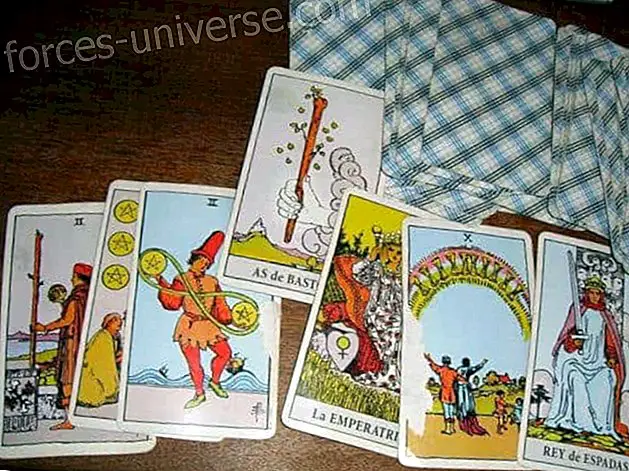Introduction to the Five Buddhas Dhyani and His Mandala
For the initiate, the mandala of the Five Dhyani Buddhas is, at the same time, a cosmic diagram of the world and of itself. It is a tool for spiritual growth and mystical experience - a map for enlightenment, animated with divine possibilities.
The Five Buddhas Dhyani: Guides for spiritual transformation 
The names of the Five Dhyani Buddhas are: Vairochana, Akshobhya, Ratnasambhava, Amitabha and Amoghasiddhi. Tibetan Buddhists believe that the Adi-Buddha, the highest and highest being, created the Dhyani Buddhas through his meditative powers.
The Five Dhyani Buddhas are heavenly Buddhas, whom we visualize during meditation. The word Dhyani is derived from the Sanskrit dhyana, which means "meditation." Dhyani Buddhas are also called Jinas ("Victorious" or "Conquerors"). They are not historical figures, such as the Gautama Buddha, but transcendent beings that symbolize divine principles or universal divine forces. Dhyani Buddhas represent various aspects of enlightened consciousness, and are great healers of mind and soul. They are our guides for spiritual transformation.
Traditionally, each Dhyani Buddha is associated with certain attributes and symbols. Each one embodies one of the five wisdoms, which as antidotes, counteract the five deadly poisons, which are of maximum danger to the spiritual progress of man and keep him bound to worldly existence. Buddhists teach that Dhyani Buddhas can transmute the five poisons with their transcendent wisdoms. The Tibetan Book of the Dead recommends that the devotee meditate on the Five Dhyani Buddhas, so that his wisdom replaces the negative forces, which has allowed him to establish himself within.
Each Buddha rules over one of the directions of space (cardinal points) and one of the cosmic realms of ether, water, earth, fire and air. Dhyani Buddhas also personify the five skandhas, or components that make up cosmic existence, as well as human personality. These components are: consciousness, form, feeling, perception and volition.
In addition, each Dhyani Buddha is associated with a specific color, a mudra (hand gesture), a symbolic animal that holds its throne, a sacred symbol and a bija (seed syllable). The bija represents the essence of Dhyani Buddha. You can use it with the sacred syllable Om and the name of the Buddha to create a mantra.
A mantra is defined as a series of mystical syllables that has an esoteric meaning. In Hinduism and Buddhism, the disciples recite mantras to evoke the power and presence of a divine being. In some traditions, devotees use mantras in meditation to become one with the deity they are invoking.
"Repeating the mantra and assuming the mudra of any Buddha, " writes the Buddhist monk and instructor Sangharakshita, "one can not only correspond or align with the particular order of reality that He personifies, but can also be imbued with his transcendental power.1
Mandalas: Maps for the mystical union
 Buddhists often represent Dhyani Buddhas in a mandala. Mandala is a Sanskrit word that means "circle, " translated in Tibetan texts as "center" or "what surrounds." Some say the word is derived from manda, which means "essence." The mandala is a circle that denotes integrity, totality, and the perfection of Buddhahood.
Buddhists often represent Dhyani Buddhas in a mandala. Mandala is a Sanskrit word that means "circle, " translated in Tibetan texts as "center" or "what surrounds." Some say the word is derived from manda, which means "essence." The mandala is a circle that denotes integrity, totality, and the perfection of Buddhahood.
The mandala is also a "circle of friends" - a meeting of Buddhas. Traditionally mandalas are painted on thangkas (paintings on scrolls framed in silk); drawn with colored sand; represented by piles of rice; or built in three dimensions, often in molten metal.
A Dhyani Buddha is placed in the center, as well as in each of the cardinal points of the mandala. The mandalas were originally made on the ground, in front of the meditator, and therefore, oriented towards the person who contemplated them. The closest point to the beholder, at the bottom of the mandala, is the east. The mandala continues clockwise, following the course of the sun, with the south to the left of the beholder, the west at the top, and the north to the right.
Lama Anagarika Govinda, one of the first interpreters of Tibetan Buddhism for the West, explains: `` In the same way that the sun rises in the east, and so the day begins, the practitioner enters in the mandala through the east door, the door in front of where he sits.
A mandala is a sacred, consecrated space, where there are no obstacles, impurities or distracting influences. Buddhists use it as an aid in meditation and visualization. All mandalas, writes the tibet logo Detlef Lauf, originate in the seed syllables, or bija-mantras, of the deities. During the meditation on these mantras, an elementary radiation of light unfolds, from which comes the image of the Buddhas.
Mandalas are rich in symbolism. The series of circles on the periphery of a mandala symbolizes the protection of external influences. The circle of flames farther away means the knowledge that destroys ignorance, or symbolizes the phenomenal world that the devotee abandons upon entering the mandala. The flames can also represent the Mountain of Fire that forbids receiving the mysteries from the uninitiated. The ring of lotus petals within the circle of fire means the spiritual world, the spiritual rebirth, the opening of the spiritual vision, or the purity of heart that is necessary for a meditation Effective.
The central part of a mandala (indicated by the square inside the circle), represents a palace or temple with four doors, one at each cardinal point. Outside the palace walls, mandalas often show beneficial and victorious symbols. These eight symbols commemorate the gifts that Gautama Buddha received after he achieved enlightenment. These are: the precious parasol, the banner of victory, the golden wheel of the Teaching, the white shell conch, two goldfish, the knot of eternity, the vase of the great treasures and the lotus flower Buddhists believe that these symbols bring good fortune.
The four doors of the palace lead to the innermost circle, the core of the mandala. The mandalas appear as circles around a sacred center, write the authors Blanche Olschak and Geshe Thupten Wangyal. These descriptions are the plane of location of the heavenly purple visionaries, in whose center the sacred power that will be invoked is manifested. The complete mandala is a fortress built around that basic force.4 In its meditation, the disciple revolves around the focus in the center of the mandala, until he can finally integrate into that powerful core.
The disciple uses the mandala to find its elements within himself. “As soon as he enters the mandala, ” writes religious historian Mircea Eliade, “he finds himself in a sacred space, out of time; the gods have already 'descended' to the ... badge. A series of meditations for which the disciple has been prepared before, help him find the gods in his own heart. In one vision, he sees them all emerging and leaving from his heart, filling the cosmic space, then being reabsorbed into him ... But, mentally entering the mandala, the yogi approaches his own 'center' ... The yogi, beginning from this iconographic 'support', you can find the mandala in your own body. ”5
Thus, with all its symbolism, a mandala is not merely an external image of celestial power. Buddhists believe that a mandala is the receptacle of the sacred force it represents. Its purpose and the goal of each of these symbolic images is to help the meditator understand the divine power within himself and achieve his own inner perfection.
“The entire external mandala is a model of that spiritual pattern that the individual who meditates sees within himself, and he must strive to experience it in his own conscience, ” says Lauf. “Buddhas [Dhyani] are considered as beings whose activity is manifested through man himself. The mandala, then, becomes a cosmic plan, in which man and the world are ordered and structured in a similar way ... Meditative Buddhas develop their charitable activity, only to the extent that the initiate knows how to recognize and achieve those characteristics and symbolic forces within himself. ”6
As the renowned orientalist Giuseppe Tucci explains: “The Five Buddhas do not remain as distant divine forms in distant skies, but descend to us. I am the cosmos and the buddhas are in me. In me is the cosmic light, a mysterious presence, although it is obscured by error. But, nevertheless, these Five Buddhas are in me, they are the five constituents of the human personality. ”7
The Dalai Lama teaches that: “Mandala, in general, means that which extracts the essence… The main meaning [of a mandala] is to enter oneself in the mandala and extract an essence, in the sense of receiving blessing. It is therefore a place to acquire magnificence. ”8
For the disciple who knows how to use it, a mandala is, therefore, a map of the progressive steps for self-transformation and mystical union. It represents the growth of the seed of Buddhahood within it. "The meditator, " says Lama Govinda: "he must imagine himself in the center of the mandala as an embodiment of the divine figure of perfect Buddhahood." And that Buddhahood, he says, "can only be found in the realization of all those qualities that, taken together, form the richness of the mandala." 9
The sacred art of Tibet: Bringing heaven to earth
Some of the most notable sculptures of the Five Dhyani Buddhas were created by Tibetan artists, from the 13th century to the beginning of the 15th century. Because Dhyani Buddhas are celestial and non-historical beings, they are often represented with jewels and crown, rather than the simple garments of a Buddha.
For Tibetans, creating a work of art is a religious act. At each stage, the artist, monk or lama, offers certain prayers and rituals. He often puts scrolls of religious texts, votive offerings and beads within the statues. When the work is finished, the monk or lama performs a consecration ceremony.
Tibetans use art as a way to bring heaven to earth, and lift man out of his earthly confines to a kingdom of peace and harmony. They believe that the statue of a Buddha, for example, is the living presence of that Buddha, who becomes one with his icon.
The Tibetan sculptures of Dhyani Buddhas convey both elegance and power. This is the unique characteristic, charm and mission of Tibetan sacred art. The real joins the transcendental. Grace and purity merge with vitality and power. Careful detail and precision bind to spontaneity. The result is that the beyond and perfection of the enlightened kingdoms arrive with an immediacy that inspire the observer to realize his own divine potential.
1. Bhikshu Sangharakshita, A Survey of Buddhism, rev. Ed. (Boulder, Colo .: Shambhala with London: Windhorse, 1980), p. 372
2. Lama Anagarika Govinda, Insights of a Himalayan Pilgrim (Berkeley: Dharma Publishing, 1991), p. 128.
3. Detlef Ingo Lauf; Secret Doctrines of the Tibetan Books of the Dead, trans. Graham Parkes (Boston: Shambhala, 1989), p. 105.
4. Blanche Christine Olschak and Geshe Thupten Wangyal, Mystic Art of Ancient Tibet (Boston: Shambhala, 1987), p. 36.
5. Mircea Eliade, Yoga: Immortality and Freedom, 2nd ed., Trad. Willard R. Trask, Bollingen Series, No. 56 (1969; reprint, Princeton, NJ: Princeton University Press, 1970), p. 225.
6. Detlef Ingo Lauf, Tibetan Sacred Art: The Heritage of Tantra (Berkeley: Shambala, 1976), pp. 120, 122, 123.
7. Giuseppe Tucci, The Theory and Practice of the Mandala, Trad. Alan Houghton Brodrick (1961; reprint, New York: Samuel Weiser, 1970), p. 51.
8. The Fourteenth Dalai Lama His Holiness Tenzin Gyatso, Kindness, Clarity, and Insight, ed. Jeffrey Hopkins and Elizabeth Napper (Ithaca, NY: Snow Lion Publications, 1984), p. 82.
9. Lama Anagarika Govinda, Foundations of Tibetan Mysticism (1960; reprint, New York; Samuel Weiser, 1969), p. 181; Insights of a Himalayan Pilgrim, p. 178.
Akshobhya, Buddha Dhyani
Akshobhya Buddha - Immovable
 The name Akshobhya means "immovable" or "imperturbable." Wisdom as a Mirror of Akshobhya reflects all things calmly and without criticism, revealing its true nature. One text says: "Just as one sees his own image reflected in a mirror, so Dharmakaya is seen in the Mirror of Wisdom." Wisdom as a Mirror is the antidote against the poison of hatred and anger.
The name Akshobhya means "immovable" or "imperturbable." Wisdom as a Mirror of Akshobhya reflects all things calmly and without criticism, revealing its true nature. One text says: "Just as one sees his own image reflected in a mirror, so Dharmakaya is seen in the Mirror of Wisdom." Wisdom as a Mirror is the antidote against the poison of hatred and anger.
In the mandala of the Five Dhyani Buddhas, Akshobhya is generally located to the east (which is located at the bottom), but sometimes it is located in the center. Its color is blue. He rules the water element and personifies the component of the form. In some systems it is associated with the skandha of consciousness. His lotus throne is supported by the elephant, a symbol of perseverance and strength.
 Its symbol is the vajra, also called the ray or diamond scepter. The vajra denotes enlightenment, the indestructible, adamantine nature of pure consciousness, or the essence of Reality. In some traditions, vajra means the union of man and the Buddha; one end of the vajra symbolizes the macrocosmic kingdom of the Buddha, and the other extreme the microcosmic kingdom of man.
Its symbol is the vajra, also called the ray or diamond scepter. The vajra denotes enlightenment, the indestructible, adamantine nature of pure consciousness, or the essence of Reality. In some traditions, vajra means the union of man and the Buddha; one end of the vajra symbolizes the macrocosmic kingdom of the Buddha, and the other extreme the microcosmic kingdom of man.
Akshobhya mudra is bhumisparsha mudra. It is the gesture of touching the earth, and denotes firmness. (The fingertips of the right hand touch the ground or hang over the right knee with the palm turned inwards). This is the mudra that Gautama Buddha used to call the earth to witness his right to enlightenment, when he was challenged by the evil Mara.
Akshobhya's paradise is Abhirati, the Land of Great Extraordinary Rejoicing. Buddhists believe that anyone reborn there cannot go back to a lower state of consciousness. Akshobhya's bija is Hum and her mantra is Om Akshobhya Hum.
 Vairochana, Buddha Dhyani
Vairochana, Buddha Dhyani
Vairochana Buddha - the Radiant
The name Vairochana means "He who is like the Sun" or "the Radiant." Vairochana Buddha represents the integration of, or the origin of Dhyani Buddhas. His wisdom is the Wisdom of Dharmadhatu. Dharmadhatu is the Kingdom of Truth, in which all things exist as they really are.
Vairochana's wisdom is also referred to as the Omni-penetrating Dharmakaya Wisdom. Dharmakaya is the Body of the Law, or the absolute nature of the Buddha. Dharmakaya is the term used for the Causal Body, which is the Body of the First Cause, the Body of the Law and the Body of the Buddha nature.
The transcendent wisdom of Vairochana reveals the realm of supreme reality and overcomes the poison of ignorance, or deceit. His wisdom is considered as the origin or total sum of the wisdoms of Dhyani Buddhas.
Generally Vairochana is located in the center of the mandalas of the Dhyani Buddhas. According to some texts, it is located to the east. Its color is white (or blue), symbolizing a pure consciousness. It rules over the ter element and embodies the skandha of consciousness. In some systems, it is associated with the skandha of the form.
 Its symbol is the dharmachakra, the wheel of the Teaching, or the wheel of the Law. The wheel means the teaching of the Buddha. Its eight rays represent the Noble Eightfold Path, which Gautama revealed in his first sermon, after his enlightenment. The lotus throne of Vairochana is supported by the lion, a symbol of courage, boldness, and an enthusiastic and in progress spirit.
Its symbol is the dharmachakra, the wheel of the Teaching, or the wheel of the Law. The wheel means the teaching of the Buddha. Its eight rays represent the Noble Eightfold Path, which Gautama revealed in his first sermon, after his enlightenment. The lotus throne of Vairochana is supported by the lion, a symbol of courage, boldness, and an enthusiastic and in progress spirit.
The Vairochana mudra is the dharmachakra mudra. It is the gesture of teaching, defined as the turning of the wheel of the Law. (There are many variations of this mudra. One way used by Tibetans is to hold both hands at the level of the heart. The palm of the right hand out and the left hand in. A circle is formed with the index and the thumb of the right hand, and a second circle with the same fingers of the left hand. circles are touched at the tips of the thumbs and indexes).
Since he embodies the wisdom of all Buddhas, Vairochana's bija is the universal sound of OM. His mantra is Om Vairochana Om.






